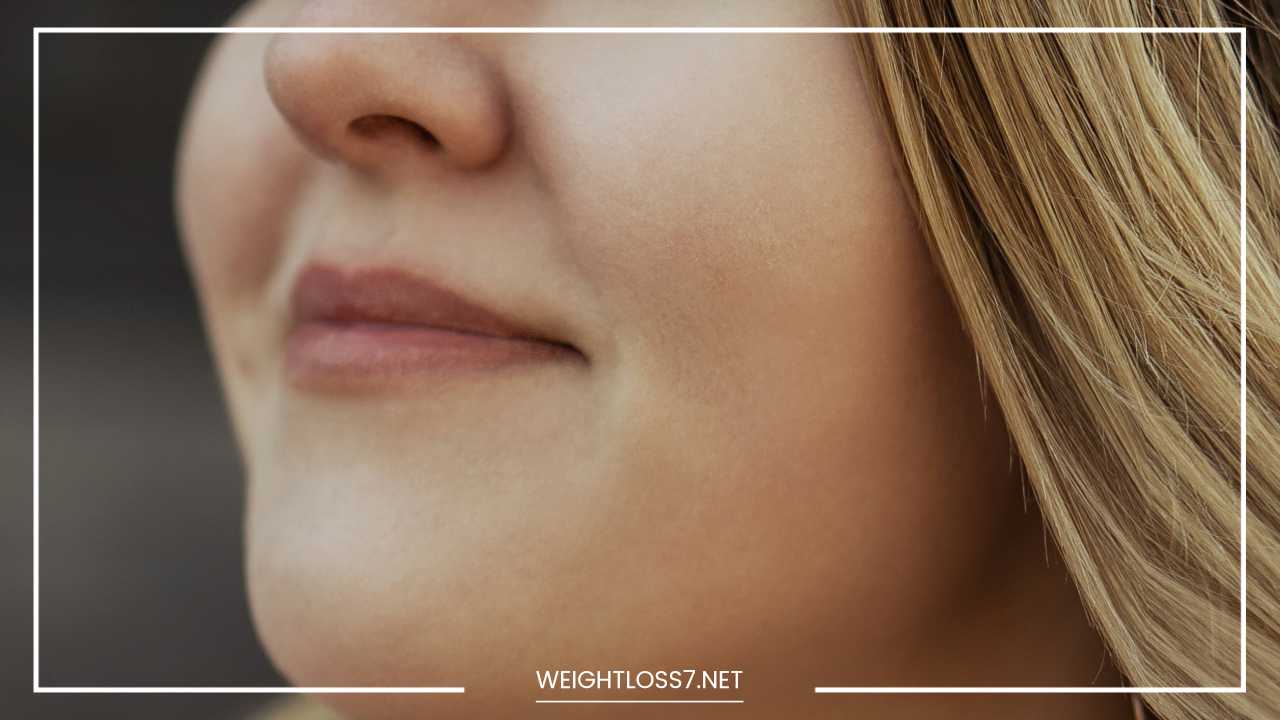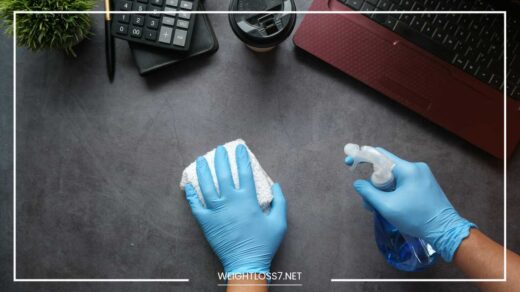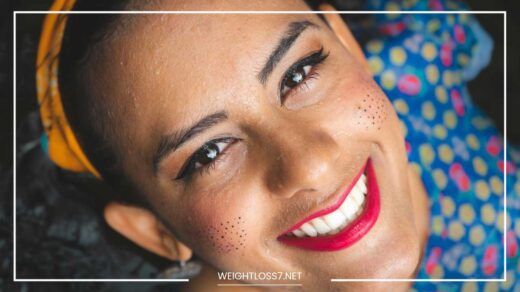How to Lose Weight in Face

Lose Facial Fat
Shedding the Pounds: A Comprehensive Guide to Reducing Facial Fat
The quest for a defined jawline and sculpted cheekbones is a constant theme in discussions about facial aesthetics. But for many, a more pressing concern lies in reducing overall facial fat.
Genetics, weight gain, and even aging can contribute to a fuller face. However, there’s no need to despair! Effective strategies can help you achieve a slimmer-looking face and enhance your overall appearance.
This comprehensive guide dives deep into the world of facial fat reduction. We’ll explore various methods that promote healthy weight loss and a more defined facial structure.
Remember, consistency is paramount. A holistic approach that combines dietary tweaks, exercise, healthy habits, and, in some cases, cosmetic procedures, is your best bet for sustainable and noticeable results.
Understanding Facial Fat: The Science Behind the Round
Before we delve into solutions, let’s get acquainted with facial fat and how it accumulates. Fat cells, scientifically known as adipocytes, are present throughout your body, including your face.
These cells act as storage units for excess energy in the form of triglycerides. Weight gain leads to an increase in the size and number of these fat cells, resulting in a fuller face.
Additionally, genetics play a crucial role in determining facial fat distribution. Some individuals naturally have rounder faces, while others tend towards a more angular structure.
Spot Reduction: Myth vs. Reality
It’s important to understand that unfortunately, targeted fat loss (spot reduction) is a myth. While you can’t shrink fat cells in specific areas like your face alone, you can promote overall weight loss, which will naturally lead to a reduction in facial fat as well.
This doesn’t mean facial exercises are entirely useless, but their impact on fat reduction is limited. We’ll explore them further later.
Dietary Strategies: Fueling Your Way to a Slimmer Face
What you put on your plate significantly impacts your body composition, including facial fat. Here’s a detailed breakdown of dietary strategies to consider:
- Create a Calorie Deficit: To lose weight, you need to burn more calories than you consume. Consulting a healthcare professional or registered dietitian is crucial to determine a safe and effective calorie deficit for you. They can personalize a plan based on your weight, activity level, and goals.
- Embrace Whole Foods: Make whole, unprocessed foods like fruits, vegetables, whole grains, and lean proteins the foundation of your diet. These foods are packed with essential nutrients and fiber, keeping you feeling fuller for longer and preventing overeating.
- Limit Processed Foods: Processed foods often come loaded with unhealthy fats, sodium, and added sugars. These contribute to weight gain and facial puffiness. Processed meats, sugary cereals, instant noodles, and packaged snacks should be minimized or eliminated altogether.
- Reduce Sugar Intake: Excessive sugar consumption can lead to weight gain and inflammation, impacting your facial appearance. Opt for natural sweeteners like fruits and limit sugary drinks and processed snacks. Consider hidden sugars lurking in condiments, sauces, and salad dressings.
- Stay Hydrated: Drinking plenty of water helps flush out toxins and reduces water retention, which can contribute to a puffy face. Aim for eight glasses of water daily. However, excessive water intake can have its downsides, so consult a doctor if you have any concerns.
- Mindful Eating: Practice mindful eating habits. Pay close attention to hunger cues, eat slowly, savor your food, and avoid distractions like television or your phone while eating. This helps prevent overeating and promotes better digestion. Consider keeping a food journal to track your intake and identify areas for improvement.
Exercise Regimen: Sculpting Your Face from Within
Exercise plays a crucial role in weight management and facial fat reduction. Here’s how to incorporate physical activity for a slimmer face:
- Cardio is King: Regular cardiovascular exercise like brisk walking, running, swimming, or cycling elevates your heart rate and burns calories, promoting overall fat loss, including in the face. Aim for at least 30 minutes of moderate-intensity cardio most days of the week. If you’re new to exercise, start slow and gradually increase the duration and intensity as your fitness level improves.
- Strength Training: Building a Stronger Foundation: Don’t neglect strength training. Building muscle mass boosts your metabolism, helping you burn more calories even at rest. Include exercises that target your face, neck, and jawline alongside full-body strength training routines. Facial exercises might not directly burn fat, but they can help tone and strengthen facial muscles, potentially leading to a more sculpted appearance. We’ll delve deeper into facial exercises in a later section.
Facial Exercises: Fact or Fiction?
While scientific research on the effectiveness of facial exercises for reducing fat is inconclusive, they can potentially improve muscle tone and definition. Here are some popular facial exercises you can try:
- Cheek Puffs: Puff out your cheeks for a few seconds, feeling the tension in your cheek muscles. Hold, then slowly release. Repeat 10-15 times.
- Fish Face: Suck your cheeks in as if you’re making a fish face. Hold for a few seconds, then release. Repeat 10-15 times.
- Jaw Clenches: Clench your jaw as if chewing gum, hold for a few seconds, then release. Repeat 10-15 times.
- Neck Stretches: Tilt your head back slightly, looking towards the ceiling. Press your tongue firmly against the roof of your mouth and hold for 10 seconds. Relax and repeat 5-10 times. This stretches the muscles under the chin.
- Lion Pose: This yoga pose might look funny, but it can help tone facial muscles. Open your mouth wide, stick out your tongue as far as possible, and widen your eyes. Hold for a few seconds, then relax. Repeat 5-10 times.
Lifestyle Habits: Optimizing Your Approach
Beyond diet and exercise, some lifestyle habits can contribute to a slimmer face:
- Prioritize Sleep: Aim for 7-8 hours of quality sleep each night. When sleep-deprived, your body produces more ghrelin (the hunger hormone) and less leptin (the satiety hormone), increasing your appetite and potentially leading to weight gain.
- Manage Stress: Chronic stress can elevate cortisol levels, a hormone linked to weight gain and fat storage around the midsection, including the face. Practice stress-management techniques like yoga, meditation, or deep breathing exercises to keep cortisol levels in check.
- Reduce Alcohol Consumption: Excessive alcohol consumption can contribute to weight gain and bloating, affecting your facial appearance. Limit alcohol intake or consider eliminating it altogether for optimal results.
- Consider Supplements (Consult a Doctor First): Some natural supplements, like green tea extract and conjugated linoleic acid (CLA), may modestly aid weight loss. However, it’s crucial to consult a healthcare professional before starting any supplements to ensure they are safe and appropriate for you.
Cosmetic Procedures: Exploring Alternative Options
While lifestyle changes and a healthy weight loss approach are ideal for long-term facial fat reduction, some individuals might seek more immediate results.
Here’s a brief overview of some cosmetic procedures to consider, keeping in mind these procedures should only be done by qualified professionals after a thorough consultation:
- Kybella: This injectable treatment uses deoxycholic acid to destroy fat cells under the chin, resulting in a more defined jawline.
- Liposuction: This surgical procedure involves suctioning out fat deposits from targeted areas, including the face. However, liposuction is generally not recommended for facial fat reduction due to the delicate nature of the facial structure.
- Botox: While not directly addressing fat, Botox injections can relax muscles that contribute to a wider jawline or a squarer face shape.
Remember: Consulting a board-certified dermatologist or cosmetic surgeon is crucial before undergoing any cosmetic procedure. They can assess your suitability, explain the risks and benefits of each option, and recommend the most appropriate course of action for your specific needs.
A Holistic Approach to a Slimmer Face
Reducing facial fat is a multifaceted endeavor. By combining a healthy diet, regular exercise, and smart lifestyle choices, you can achieve a slimmer, more defined facial structure.
Remember, consistency is key. Don’t get discouraged by setbacks; stay committed to your goals and celebrate your progress along the way.
If you’re considering cosmetic procedures, consult a qualified professional to explore safe and effective options. With dedication and the right approach, you can achieve your desired facial aesthetics and radiate confidence from within.
Beyond the Basics: Advanced Strategies for Facial Fat Reduction
This section dives deeper into some advanced strategies you can consider alongside the core principles discussed earlier.
However, it’s important to remember that these approaches might not be suitable for everyone, and consulting a healthcare professional or dermatologist is crucial before implementing them.
-
Dietary Modifications:
- Intermittent Fasting: This eating pattern cycles between periods of eating and fasting. While research is ongoing, some studies suggest intermittent fasting may promote weight loss and improve metabolic health, potentially impacting facial fat as well. There are various intermittent fasting protocols; consult a doctor to determine if it’s safe and appropriate for you.
- Micronutrient Optimization: Ensure you’re getting adequate amounts of essential vitamins and minerals. Deficiencies in certain nutrients, like vitamin D, can impact metabolism and weight management. Consider a blood test to identify any deficiencies and discuss supplementation with your doctor.
-
Advanced Exercise Techniques:
- High-Intensity Interval Training (HIIT): HIIT involves alternating short bursts of intense exercise with periods of rest or low-intensity activity. Studies suggest HIIT can be an effective way to burn calories and promote fat loss in a shorter time compared to moderate-intensity cardio. However, it’s more demanding, so consult a doctor before starting HIIT if you have any health concerns.
- Facial Yoga Routines: While the effectiveness of facial exercises for fat reduction is debated, incorporating facial yoga routines alongside other methods might offer some benefits. Look for online resources or consult a certified facial yoga instructor to learn proper techniques.
-
Alternative Therapies (Consult a Professional First):
- Lymphatic Drainage Massage: This massage technique aims to stimulate the lymphatic system, which helps drain excess fluids and toxins from the body. While some people believe it can reduce facial puffiness, scientific evidence is limited. Consult a licensed massage therapist trained in lymphatic drainage to ensure proper technique and safety.
Maintaining Results: Building Sustainable Habits
Reaching your desired facial slimness is just the first step. Here are some tips for maintaining results:
- Develop Sustainable Eating Habits: Don’t view your dietary changes as a temporary fix. Focus on creating healthy, sustainable eating patterns you can maintain for the long term.
- Stay Active: Make exercise a regular part of your life. Find activities you enjoy, whether it’s dancing, swimming, playing a sport, or simply going for a brisk walk.
- Manage Stress Effectively: Chronic stress can sabotage your weight management efforts. Prioritize stress-relieving activities like meditation, yoga, or spending time in nature.
- Monitor Progress: Regularly track your weight, measurements, and progress photos to stay motivated and adjust your approach if needed.
Remember: Everyone’s body is different. The rate at which you lose facial fat will vary depending on your genetics, weight, overall health, and commitment to the strategies outlined above. Be patient, consistent, and celebrate your journey towards a slimmer, healthier you.
Disclaimer: The information in this blog post is for general informational purposes only and should not be interpreted as medical advice. Always consult a healthcare professional before starting any new diet, exercise program, or using supplements.

















